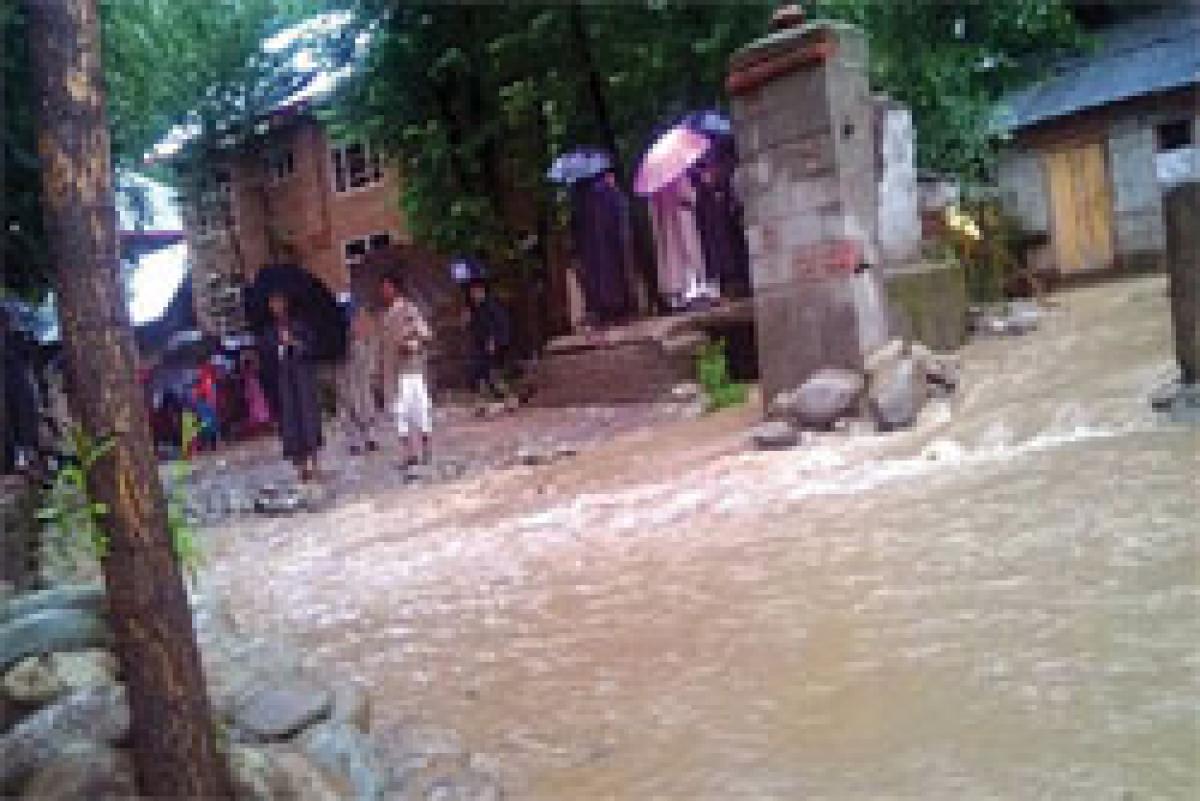Live
- CM Revanth petitions for change in Paleru rly line
- Udupi MP seeks more key highways on top priority
- New diet plan rolled out at welfare hostels
- HRF demands for nation-wide caste census
- SP launches Medicover family health card
- Chiranjeevi Visits Allu Arjun for Lunch Amid Ongoing Legal Turmoil
- Covid ‘scam’ FIR row: Congress pursuing politics of vengeance, says BJP
- Decades-old temple re-opens after 46 years in Sambhal
- Chandrababu to Inspect Polavaram project amid security measures tomorrow
- Aaditya Thackeray Calls For EOW Probe Into Mumbai's Rs 7,000 Crore Road Project
Just In

x
Highlights
Jammu and Kashmir has been through an unusual situation during the last fortnight with cloudbursts occurring with frightening frequency.
.jpg) Jammu and Kashmir has been through an unusual situation during the last fortnight with cloudbursts occurring with frightening frequency.
Jammu and Kashmir has been through an unusual situation during the last fortnight with cloudbursts occurring with frightening frequency.
The freak phenomenon after last year's unprecedented floods has put the common man on the edge.
Six people were killed last week as multiple cloudbursts hit the north Kashmir mountain villages of Kulan, Rizan, Gagangir, Sonamarg and the Baltal base camp of the ongoing Amarnath Yatra.
Many heads of cattle, besides sheep and goats, in the meadows have also reportedly perished because of cloudburst during this period.
The damage to private property and government infrastructure by cloudbursts in the Jammu region has been more, though fortunately no human being lost life due to this freak weather phenomenon in Jammu region.
Government buildings, including some schools and health centres, besides private property including shops and residential houses, were damaged in Poonch and Ramban districts because of cloudbursts.
Warm, sunny mornings have been followed by sudden gathering of clouds followed by high thunderstorm/ cloudburst activity during the last 15 days as the people look skywards to gauge from where the next tragedy is likely to strike.
"Last year, there was an unprecedented flood that devastated low lying areas in the Kashmir Valley and this year it is the higher reaches that seem to be targets of divine wrath. Nobody knows what is in store for us," said a worried Muhammad Ramzan, 57, who lives in north Kashmir's Kangan area on the Srinagar-Leh national highway, also the route to the Amarnath Yatra's Baltal base camp.
Sanam Lotus, director of the local Met Office, explained the freak weather active at present in the state.
"This year, the frequency of cloudbursts and thunderstorms has been unusually high in Jammu and Kashmir. There has been more than normal thunderstorm and rainfall activity because of the monsoon in the state.
"Because of high rainfall activity in March we almost had a flood like situation on our hands this year," Lotus told IANS.
"In fact, post the September 2014 floods, there has been record breaking rainfall in Jammu and Kashmir, but heavy rainfall does not necessarily cause cloudbursts.
"For cloudbursts to occur, three conditions are important: there should be enough moisture in the air, the atmosphere should be warm and it should also be instable, which means there should be convective activity (warming of the earth)," Lotus added.
"Unfortunately, despite rains during the last 20 days that have been moderate to light, the general daily warmth does not reduce."
Asked why Kashmiris generally believe the monsoon clouds do not cross the Pir Panjal Mountains and drain out before a few of them manage to cross the high mountains and reach the Valley, the weatherman said: "That is a myth."
"The fact is that the monsoons do not only cross and pour in the valley, these even cross the Himalayas and reach the Ladakh region," he added.
Lotus, however, had a heartening word as well. "The monsoon, as of today, is not very active over the state. Normally, the monsoon withdraws by September 15, but may be delayed by a few days", he said.
Asked about the precautions against cloudbursts, Lotus said: "I am not an expert on that. But while choosing residential sites, people must select safe sites by which I mean they should take topography including slope, vulnerability and the like into consideration."
Lotus believed the vagaries of nature can be mitigated and their impact can be rendered less severe by putting knowledge and technology into practice.
"Believing that low-lying areas are flood-prone is okay, nobody guarantees complete safety from nature's fury in the higher reaches. That seems to be the message," said a stoic Ghulam Mustaffa, 64, a resident of Baramulla district.

Next Story
More Stories
ADVERTISEMENT
© 2024 Hyderabad Media House Limited/The Hans India. All rights reserved. Powered by hocalwire.com







